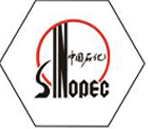
Aug . 12, 2024 11:12
Back to list
Exploring Gas Measurement Techniques for Enhanced Accuracy and Environmental Impact Assessment
The Measurement of Gases Principles and Techniques
The measurement of gases is a crucial aspect of various scientific and industrial processes. Whether it be for environmental monitoring, industrial safety, or scientific research, understanding how to accurately measure gas concentrations is essential for ensuring accurate results and maintaining safety standards. This article delves into the principles and techniques involved in gas measurement.
Principles of Gas Measurement
At its core, gas measurement involves determining the concentration of a specific gas in a mixture or its properties such as pressure, temperature, and volume. The fundamental principle governing gas laws is that gases behave in predictable ways under certain conditions. The ideal gas law, represented as PV = nRT, relates the pressure (P), volume (V), and temperature (T) of a gas to the number of moles (n) and the universal gas constant (R). This law forms the foundation for many gas measurement techniques.
Techniques for Gas Measurement
.
2. Mass Spectrometry Mass spectrometry (MS) can be combined with gas chromatography to provide highly accurate measurements of gas concentrations. In this technique, the gas is ionized, and the ions are sorted based on their mass-to-charge ratio. The resulting spectrum provides detailed information about the gas composition and concentration, making it ideal for trace analysis in environmental samples.
قياس الغاز

3. Infrared Spectroscopy (IR) Infrared spectroscopy is another powerful technique used to measure gas concentrations. Different gases absorb infrared light at specific wavelengths. By measuring the absorption at these wavelengths, one can quantify the concentration of various gases present in a sample. This method is particularly useful for measuring greenhouse gases such as carbon dioxide (CO2) and methane (CH4).
4. Electrochemical Sensors For real-time monitoring of gas concentrations, electrochemical sensors are often employed. These devices work by generating a current proportional to the concentration of a specific gas in the environment. They are widely used for monitoring toxic gases, ensuring workplace safety and compliance with environmental regulations.
5. Photoacoustic Spectroscopy This technique utilizes the interaction of light with gas molecules. When a gas absorbs light, it experiences a slight change in temperature, leading to the generation of sound waves. By measuring these sound waves, one can determine the concentration of the gas. This method offers high sensitivity and specificity for various gases.
Applications of Gas Measurement
The accurate measurement of gases finds applications in multiple fields, including environmental science, automotive testing, industrial processes, and health and safety monitoring. For example, continuous monitoring of air quality in urban areas helps in assessing pollution levels and developing mitigation strategies. In industrial settings, real-time detection of hazardous gases is vital for ensuring worker safety and compliance with safety regulations.
Conclusion
The measurement of gases is an essential function that supports numerous scientific and industrial endeavors. With advancements in technology, methods such as gas chromatography, mass spectrometry, and infrared spectroscopy continue to enhance our ability to monitor and analyze gas concentrations accurately. As the understanding of gas behavior improves, so too will the techniques used for gas measurement, leading to safer environments and more precise scientific research.
Latest news
-
Safety Valve Spring-Loaded Design Overpressure ProtectionNewsJul.25,2025
-
Precision Voltage Regulator AC5 Accuracy Grade PerformanceNewsJul.25,2025
-
Natural Gas Pressure Regulating Skid Industrial Pipeline ApplicationsNewsJul.25,2025
-
Natural Gas Filter Stainless Steel Mesh Element DesignNewsJul.25,2025
-
Gas Pressure Regulator Valve Direct-Acting Spring-Loaded DesignNewsJul.25,2025
-
Decompression Equipment Multi-Stage Heat Exchange System DesignNewsJul.25,2025

